Thurgood Marshall
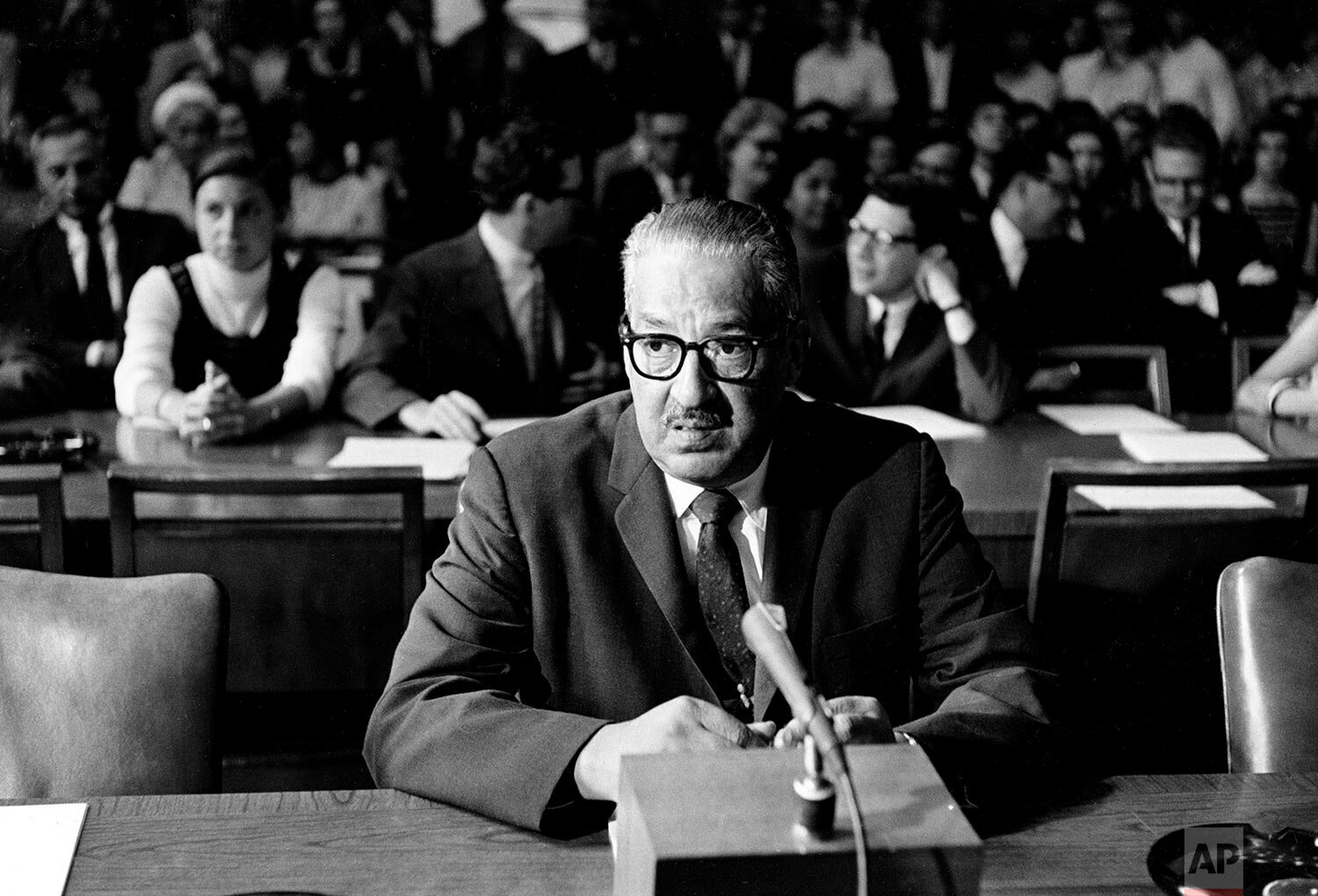
"You do what you think is right and let the law catch up," thats how the grandson of slaves, Thurgood Marshall described his judicial approach.
It has been more than 50 years since Marshall became the first African-American U.S. Supreme Court Justice and racial tensions seem as high as they where in the 50s when Marshall brought Brown v. Board of Education to the supreme court.
"I wish I could say that racism and prejudice were only distant memories. We must dissent from the indifference. We must dissent from the apathy. We must dissent from the fear, the hatred and the mistrust…We must dissent because America can do better, because America has no choice but to do better."
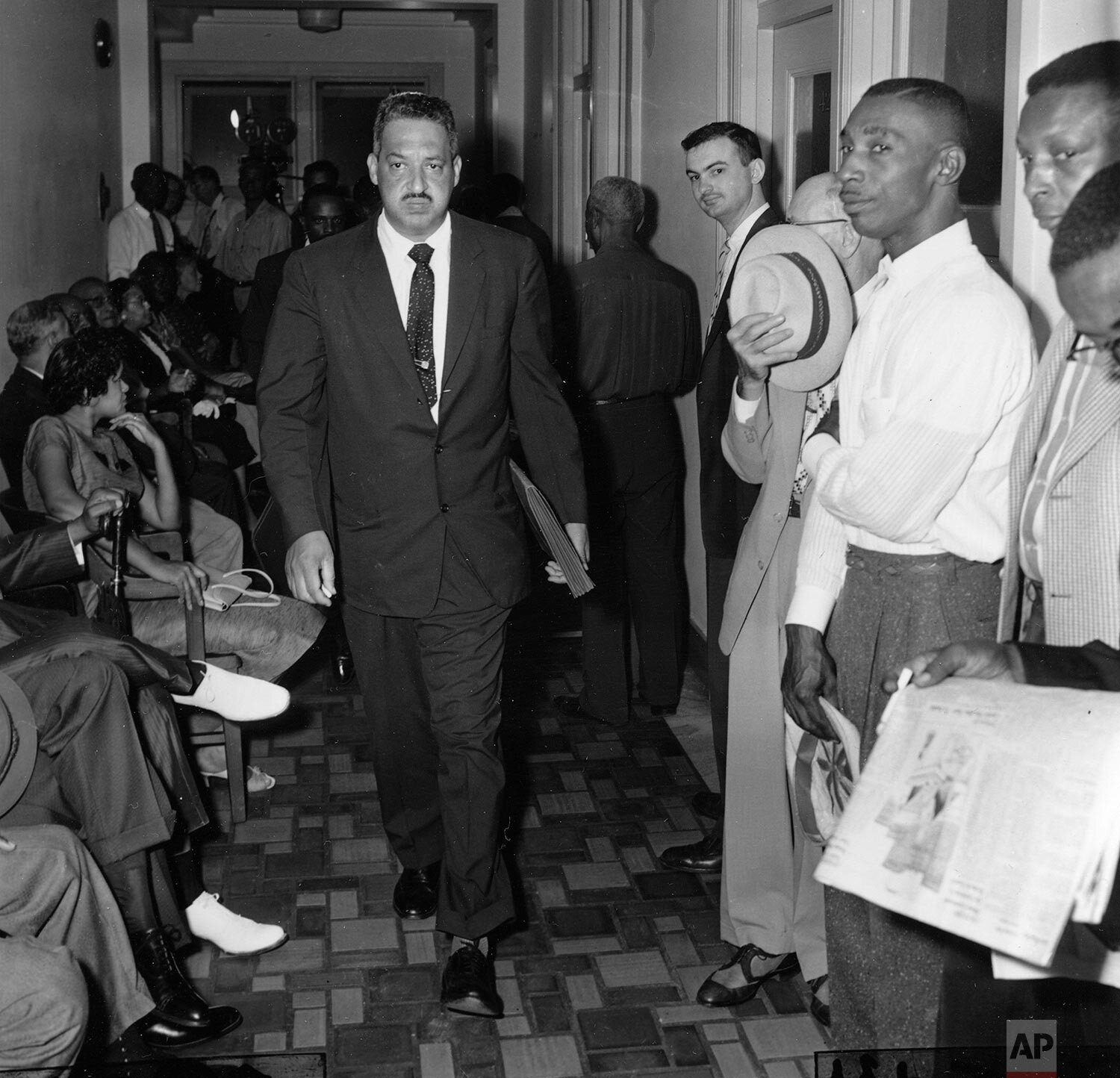
Thurgood Marshall, attorney for the National Association for the Advancement of Colored People, or NAACP, arrives at the U.S. District Court in Little Rock, Ark., on September 20, 1957. Federal Judge R. Davies is presiding over an injunction hearing against Arkansas Gov.Orval Faubus to withdraw the National Guard from Central High School and to integrate the previously all-white school. (AP Photo)
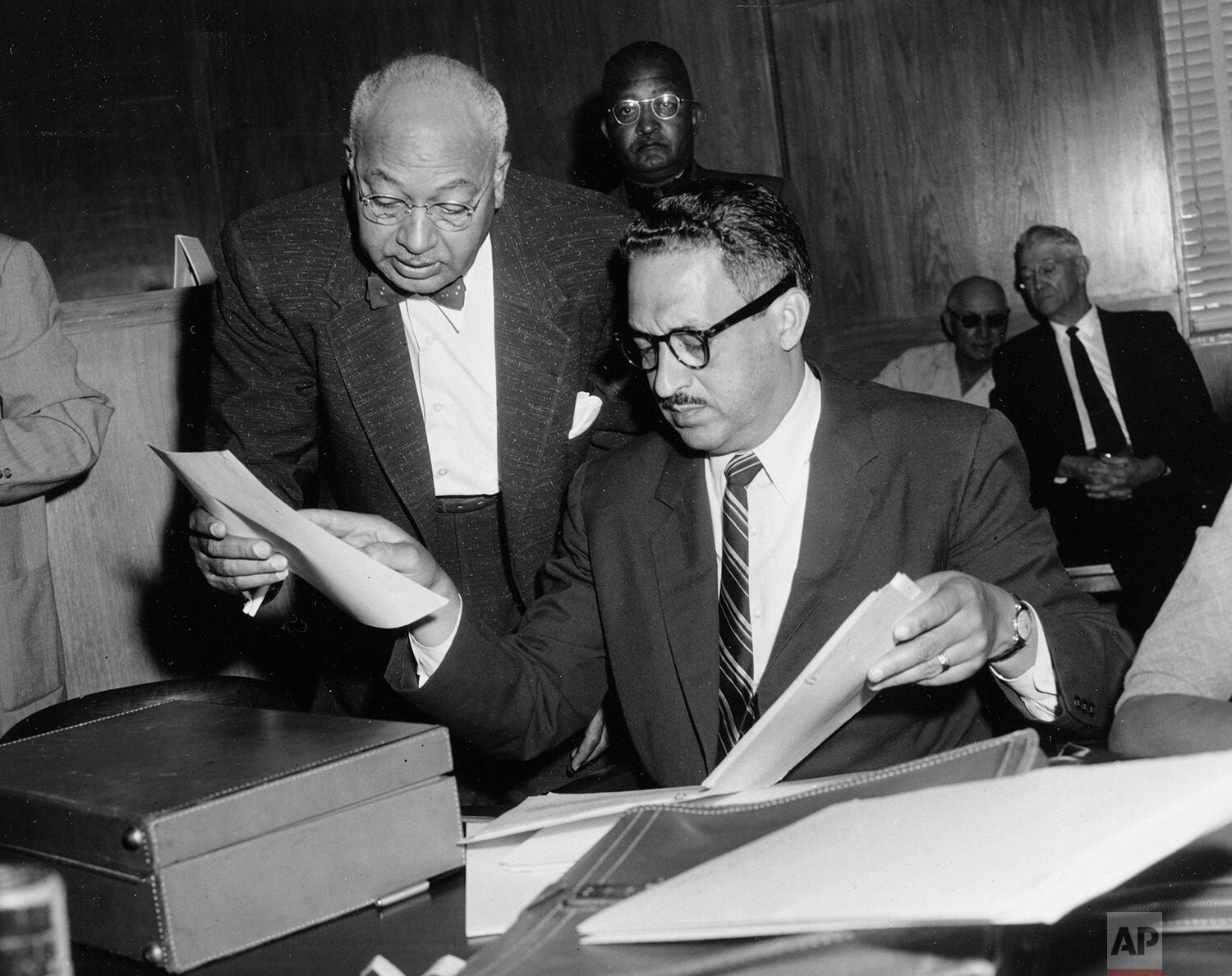
Thurgood Marshall, right, chief legal counsel of the National Association for the Advancement of Colored People, and Dallas attorney U. Simpson Tate, left, check documents during a court hearing in Tyler, Texas, September 28, 1956. They are trying to fight off attempts from Texas Attorney General John Ben Shepperd to shut down the branch offices of the NAACP in Texas. (AP Photo)
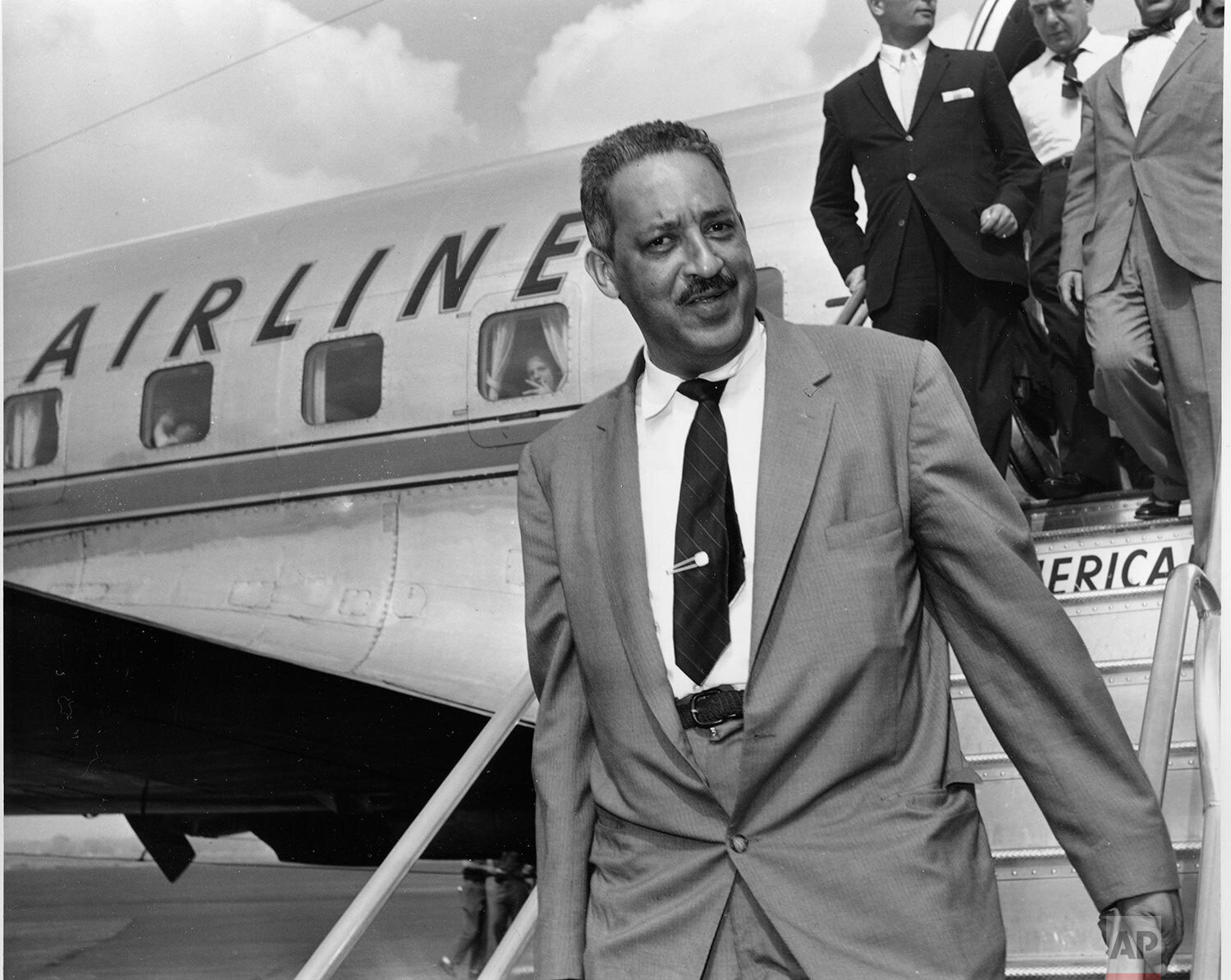
Thurgood Marshall, attorney for the National Association for the Advancement of Colored People, or NAACP, arrives at National Airport in Washington, August 22, 1958, to file appeal with the Supreme Court in the integration case of Central High School of Little Rock, Arkansas. (AP Photo)
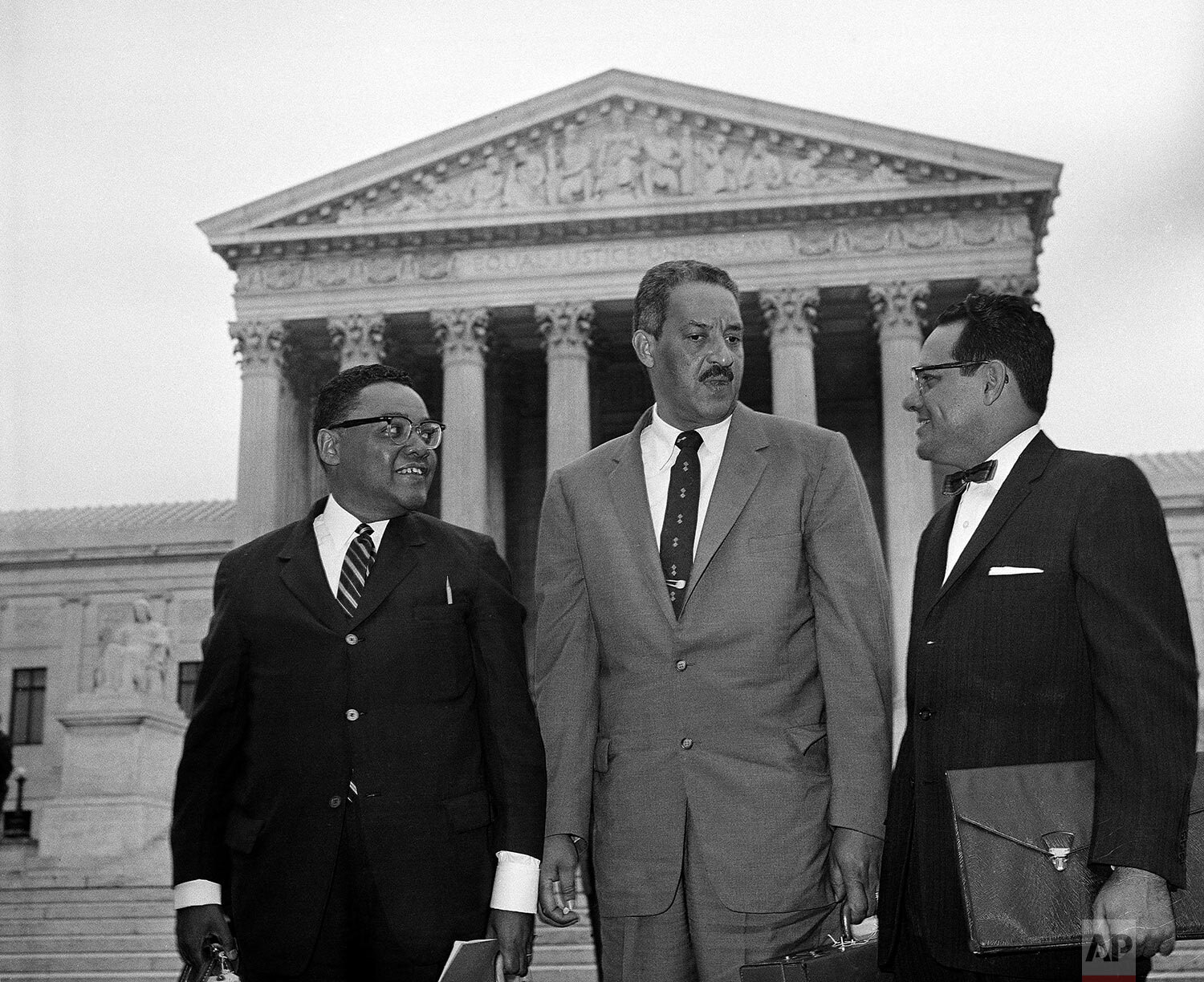
Three attorneys for the National Association for the Advancement of Colored People pose outside the Supreme Court in Washington, D.C., after arriving, Aug. 28, 1958, for the extraordinary session of High Tribunal on integration. From left: William T. Coleman, Jr.; Thurgood Marshall and Wiley A. Branton. (AP Photo/William J. Smith)
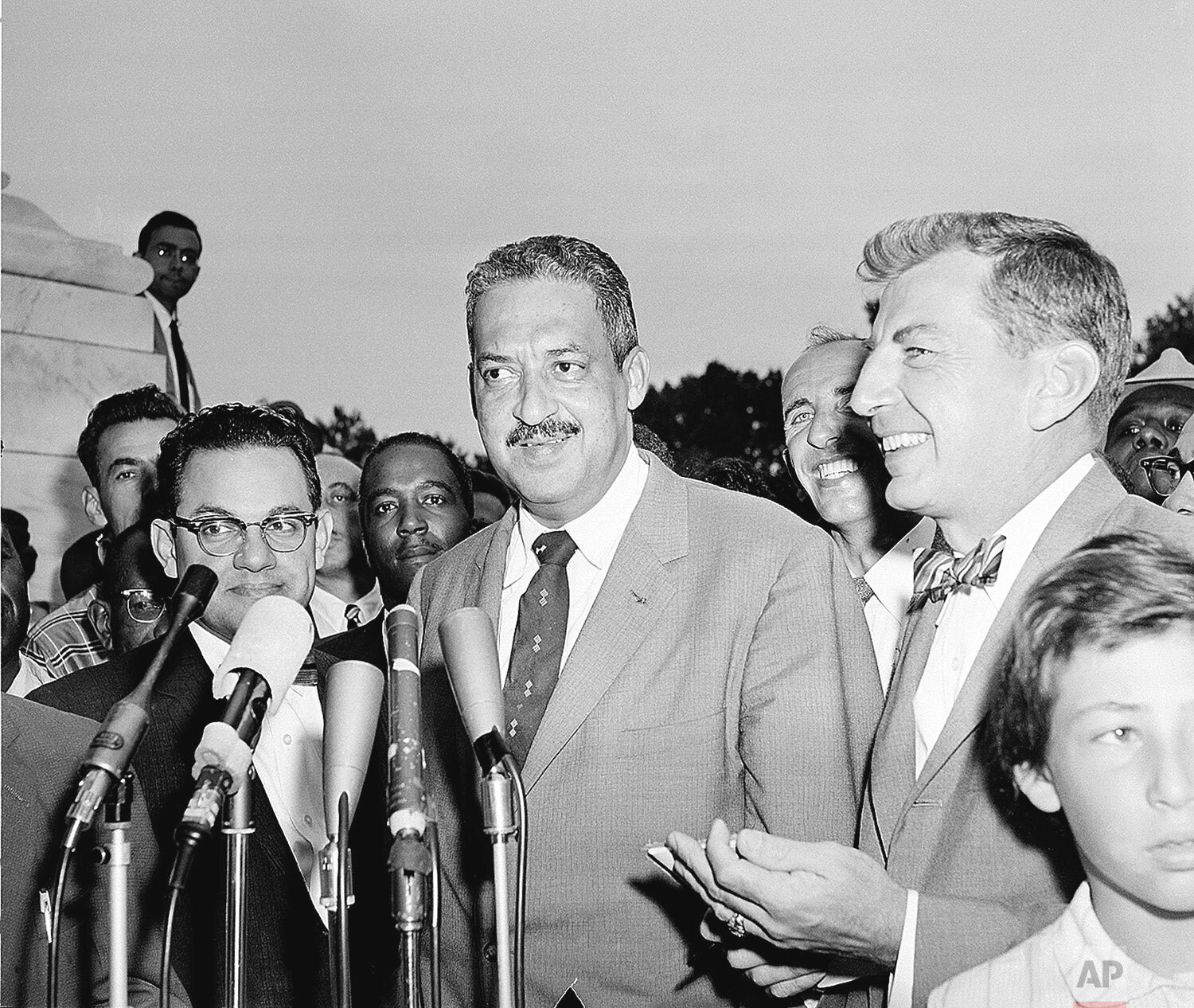
Thurgood Marshall, attorney for the National Association for the Advancement of Colored People (NAACP), speaks to reporters in Washington, D.C., Aug. 28, 1958. Marshall argued the integration case for the NAACP before the Supreme Court in a special session regarding integration in Little Rock's Central High School in Arkansas. (AP Photo)
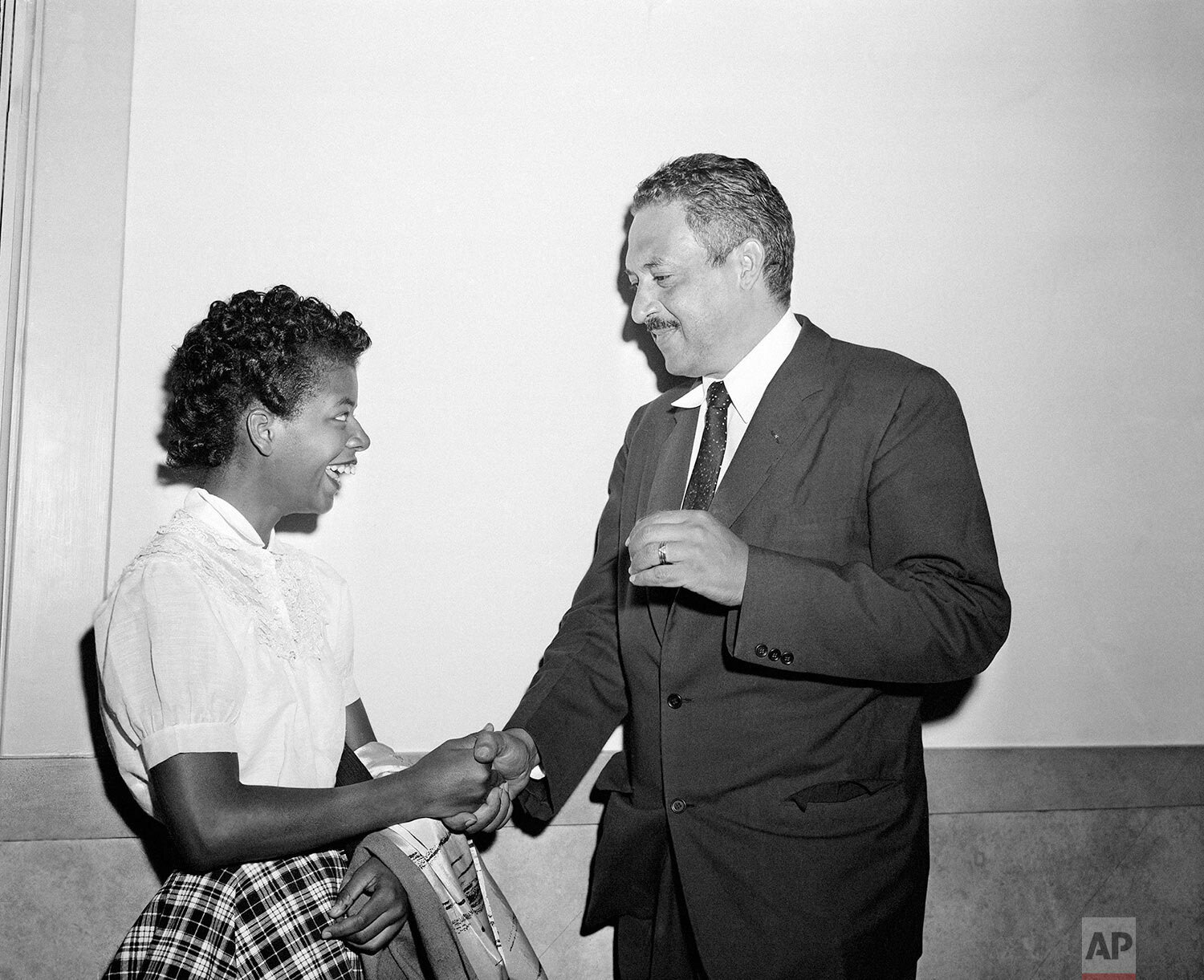
Thurgood Marshall, right, national attorney for the National Association for the Advancement of Colored People (NAACP), talks with Elizabeth Echford, 15, in the corridor of U.E. Courthouse at Little Rock, Ark., Sept. 7, 1957, where a hearing on integration of Central High School is being held. Elizabeth was the first Black student to attempt to enter the school, but was turned back by armed National Guard troops who had been called out by Gov. Orval Faubus despite orders by Federal Judge Ronald N. Davies that the school accept African Americans. (AP Photo)
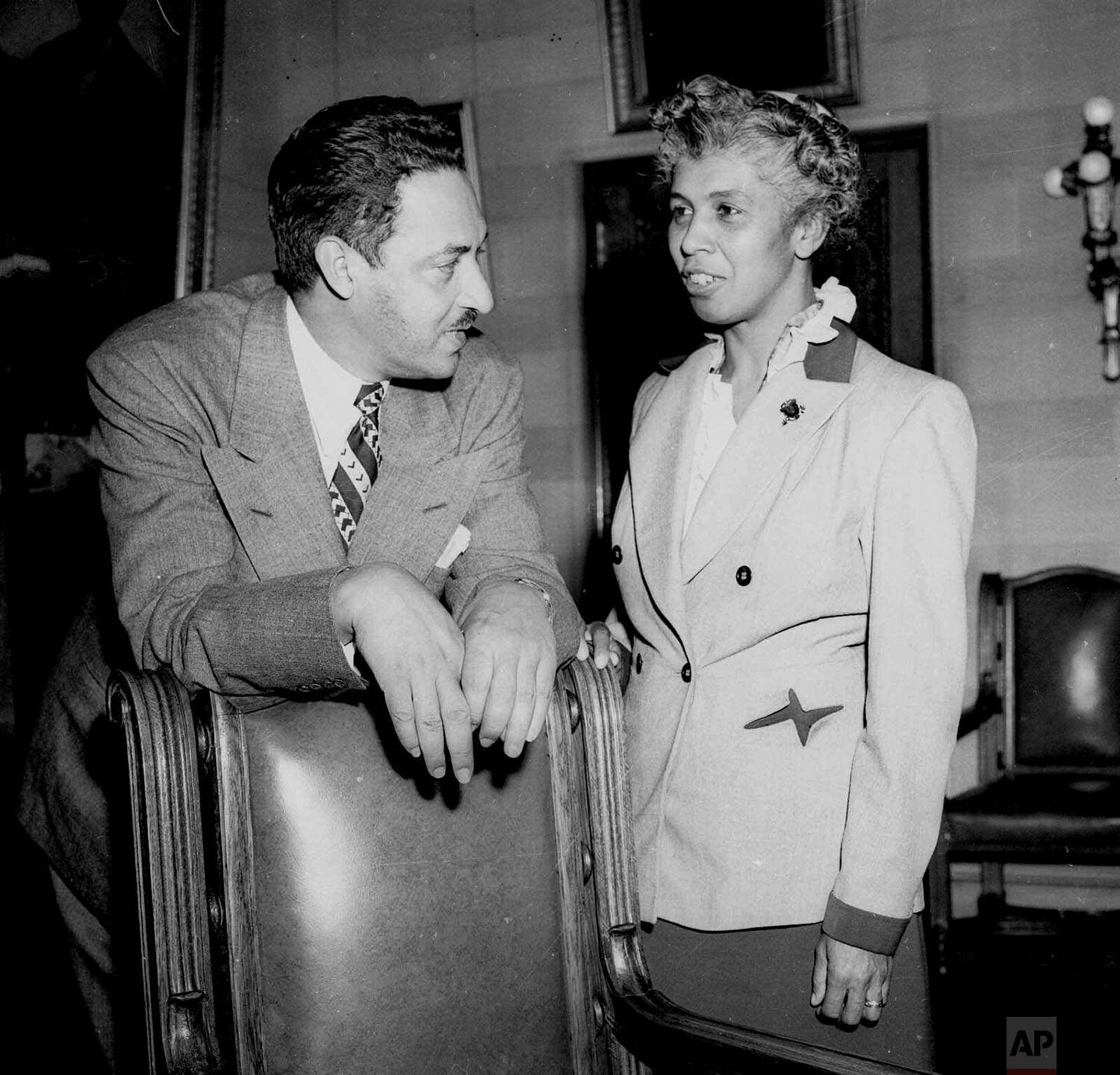
Thurgood Marshall, chief legal counselor the National Association for the Advancement of Colored People (NAACP), and Mrs. Alveta Shultz, parent of a school child, talk in Albany, N.Y., Nov. 9, 1949. This meeting is before a hearing on alleged segregation of school children in the Hempstead, Long Island, N.Y., Prospect School. Marshall and Mrs. Shultz are to meet with the New York State Commissioner of Education. (AP Photo)
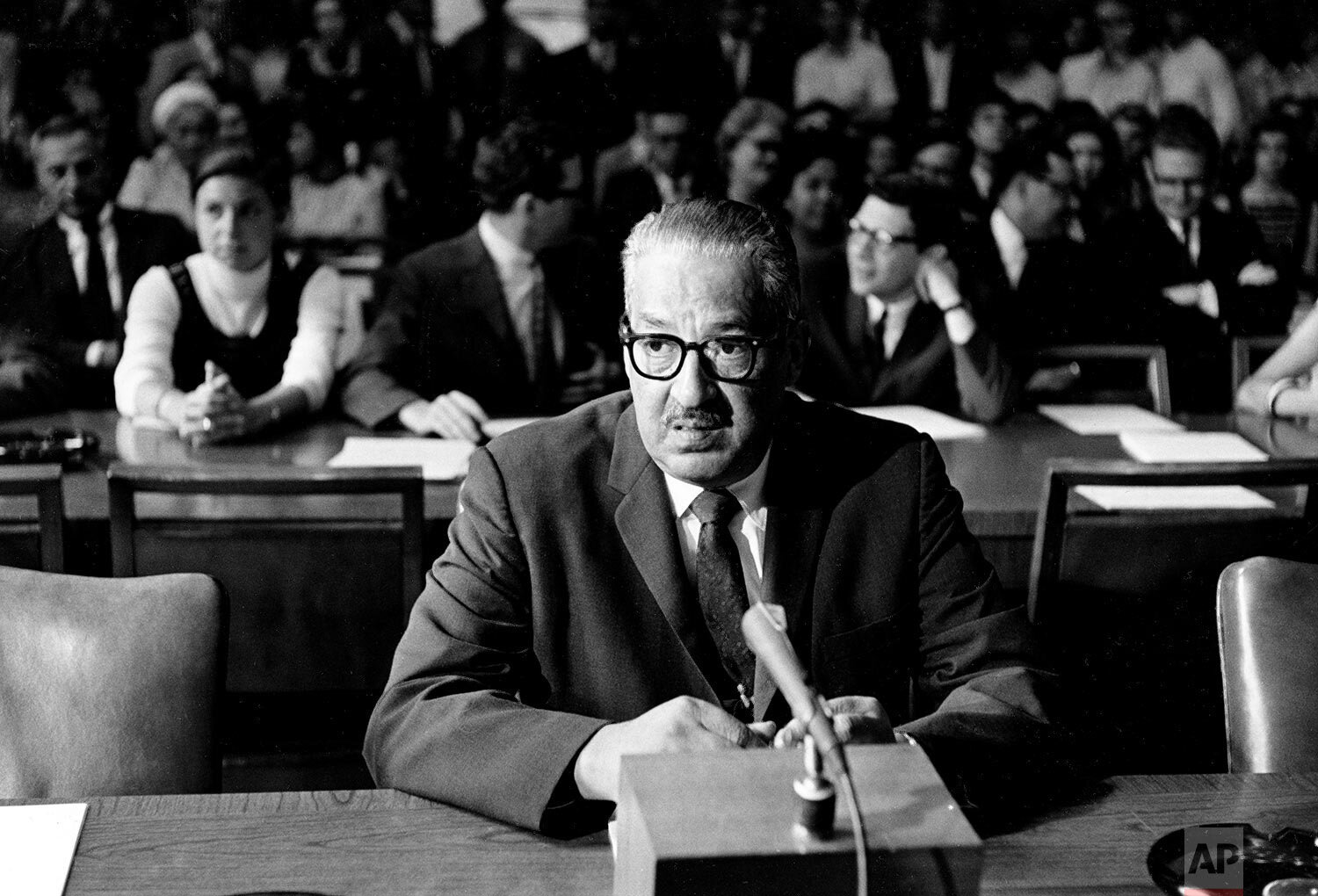
Solicitor General Thurgood Marshall, nominated by President Lyndon B. Johnson to the U.S. Supreme Court, sits at the witness table before testifying on his fitness for the post before the Senate Judiciary Committee, in Washington, July 18, 1967. (AP Photo)
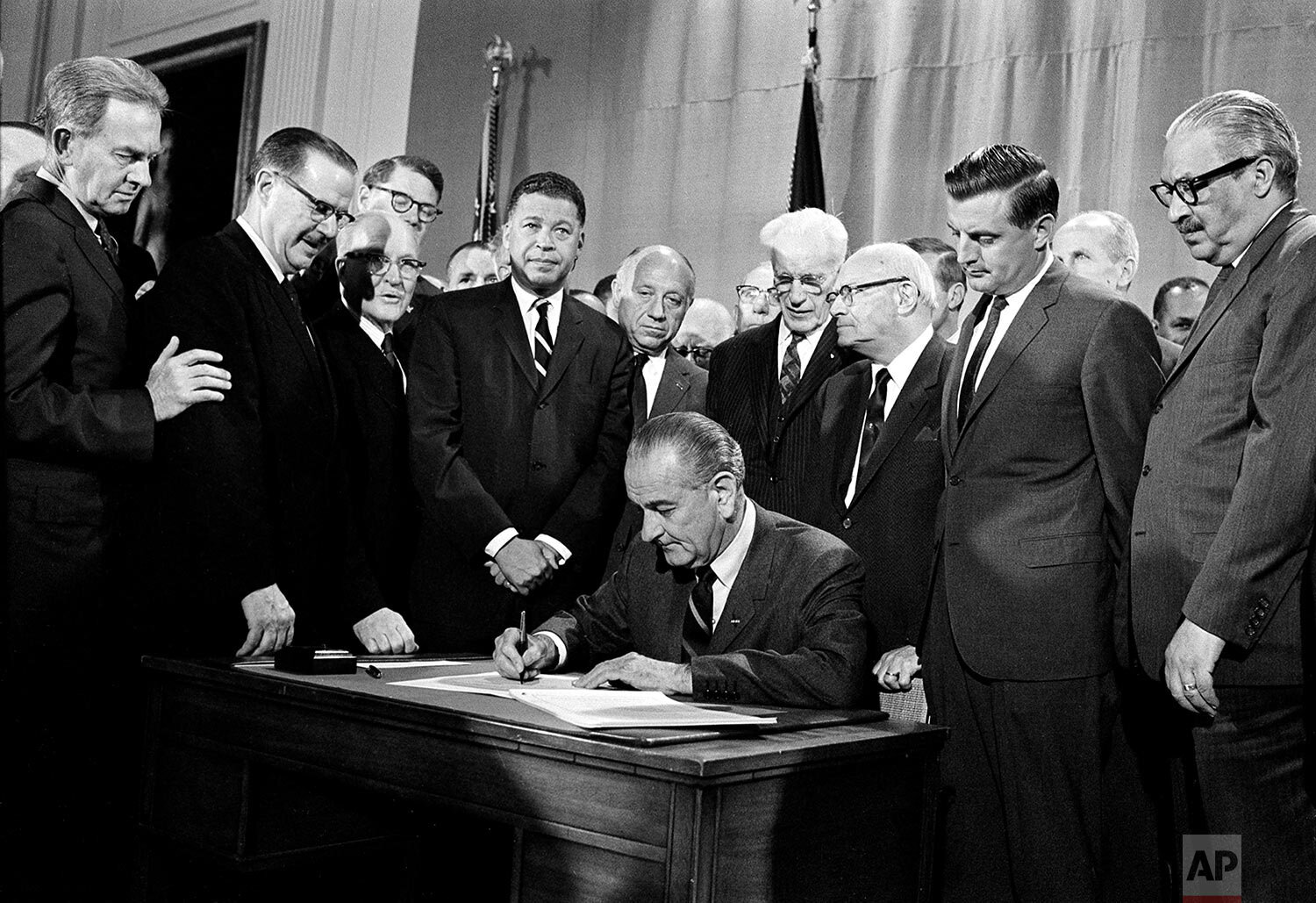
U.S. President Lyndon B. Johnson signs into law the Civil Rights Open Housing bill during a ceremony in the East Room of the White House in Washington, D.C., April 11, 1968. Watching in the front row, from left, are, Sen. Clifford Case, R-N.J.; Sen. Hugh Scott, R-Pa.; Rep. William McCulloch, R-Ohio; Sen. Edward Brooke, R-Mass.; Sen. Jacob Javits, R-N.Y.; Speaker John McCormack, D-Mass.; Rep. Emanuel Celler, D-N.Y.; Sen. Walter Mondale, D-Minn.; and Supreme Court Justice Thurgood Marshall, far right. (AP Photo)
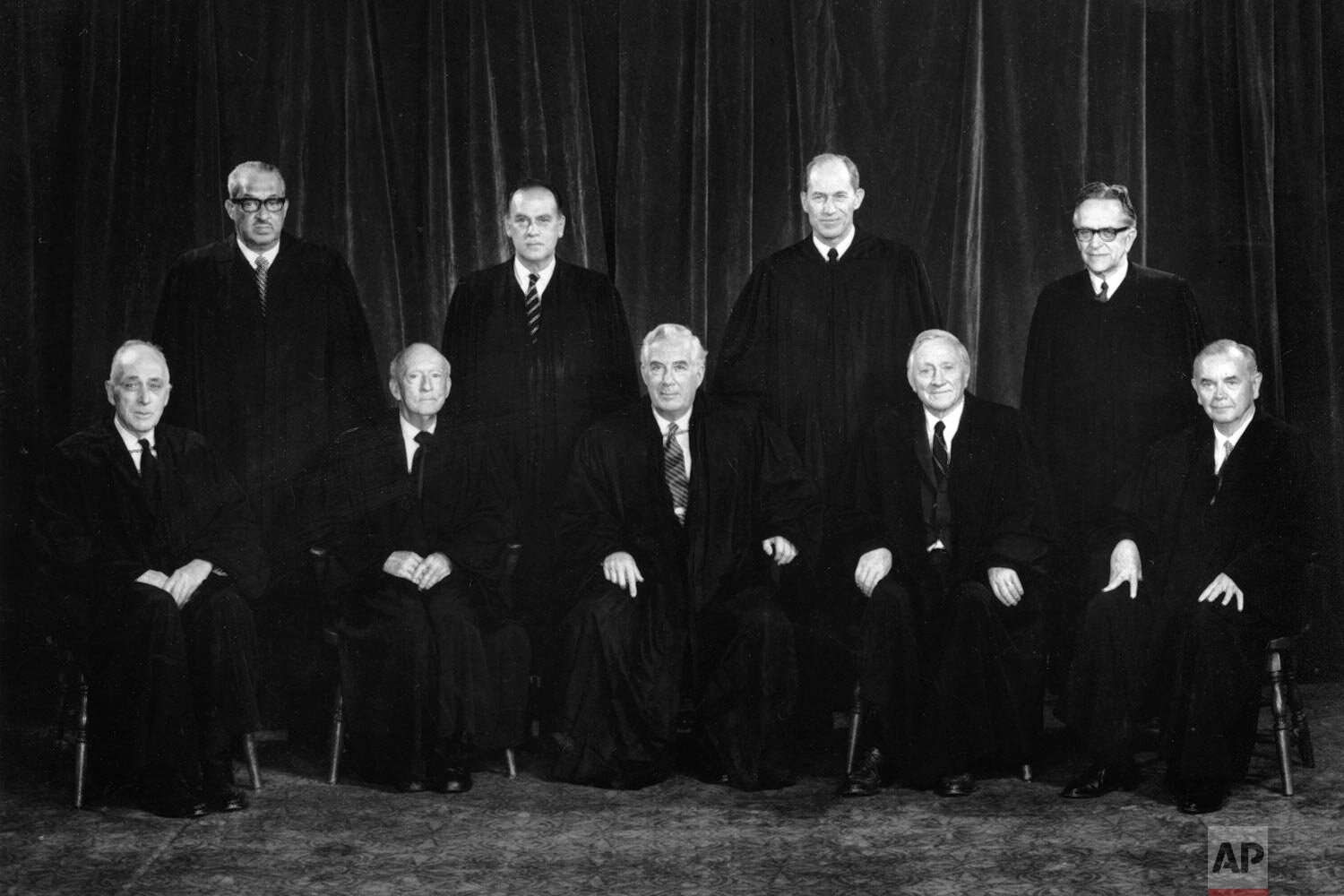
This is a Jan. 1971 photo of members of the U.S. Supreme Court in Washington, D.C. Seated from left are, Associate Justices John W. Harlan and Hugo Black; Chief Justice Warren E. Burger; Associate Justices William O. Douglas and William Brennan Jr. Standing from left are, Associate Justices Thurgood Marshall, Potter Stewart, Byron R. White and Harry A. Blackmun. (AP Photo)
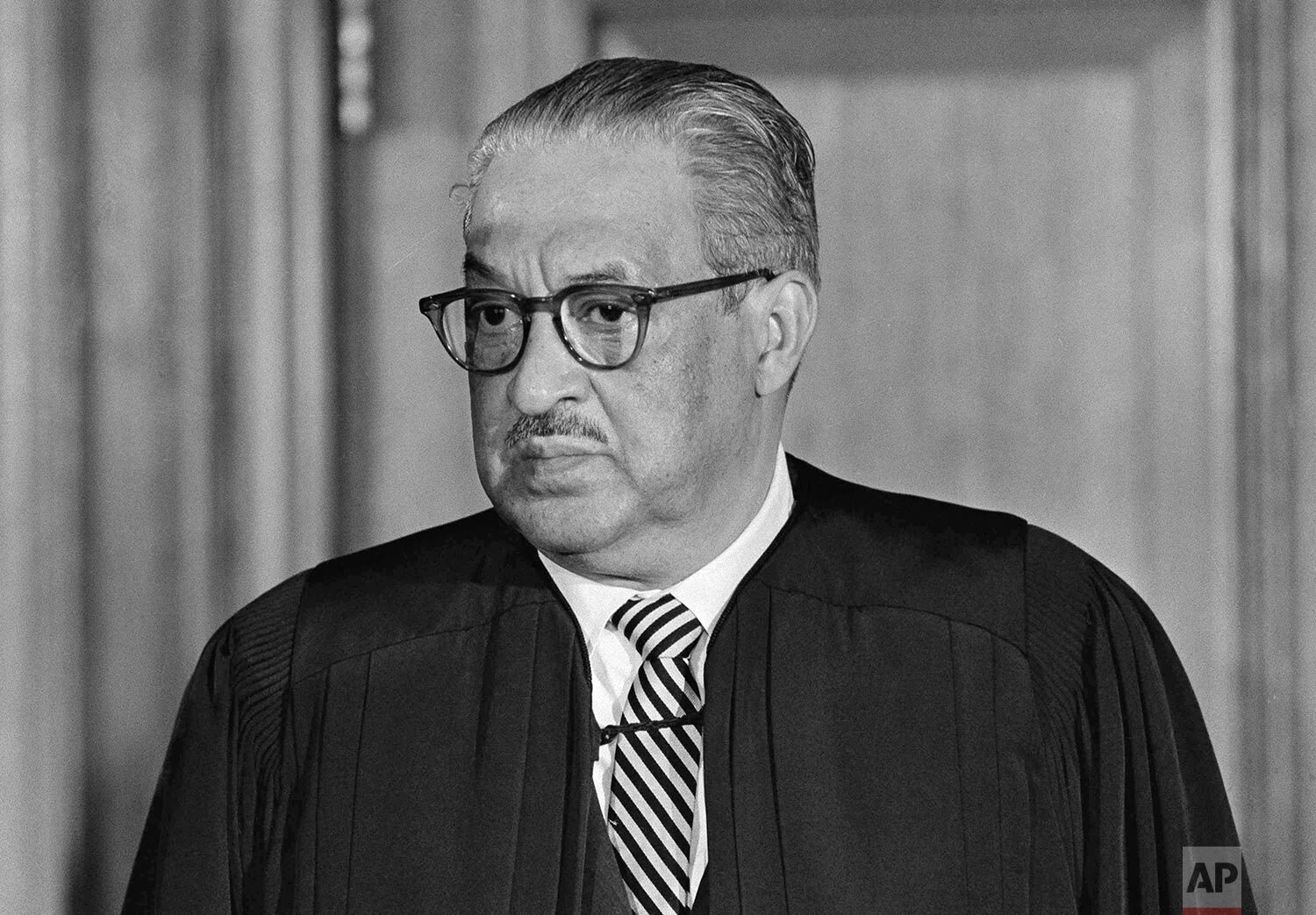
Thurgood Marshall of the US Supreme Court on April 20, 1972. (AP Photo/John Rous)
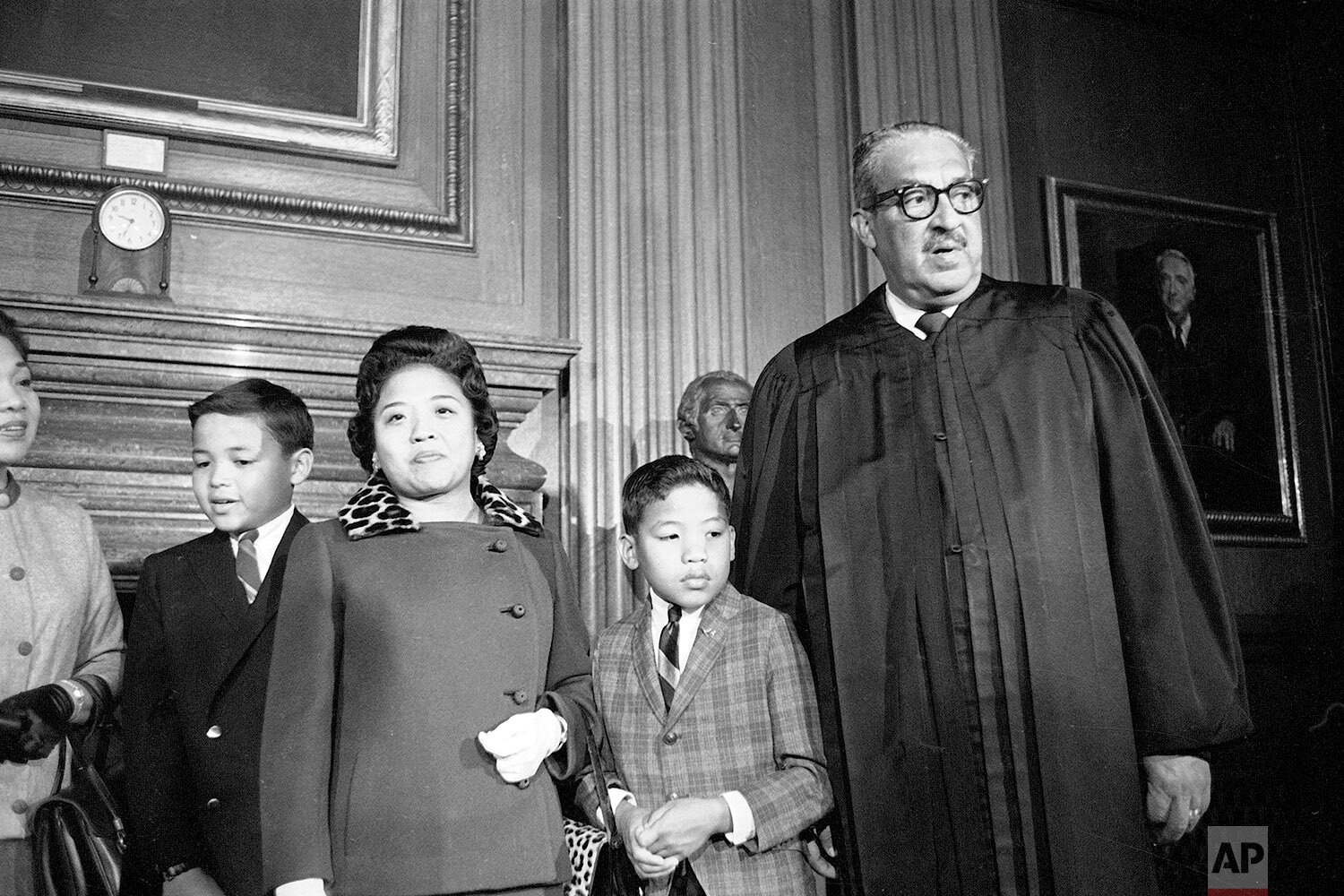
Supreme Court Justice Thurgood Marshall's family is at hand to watch him take his seat at the court for the first time, Oct. 2, 1967. From left to right: sons Thurgood, Jr., 11, John, 9, wife Cecilia Suyat, and the Justice. (AP Photo/Henry Griffin)
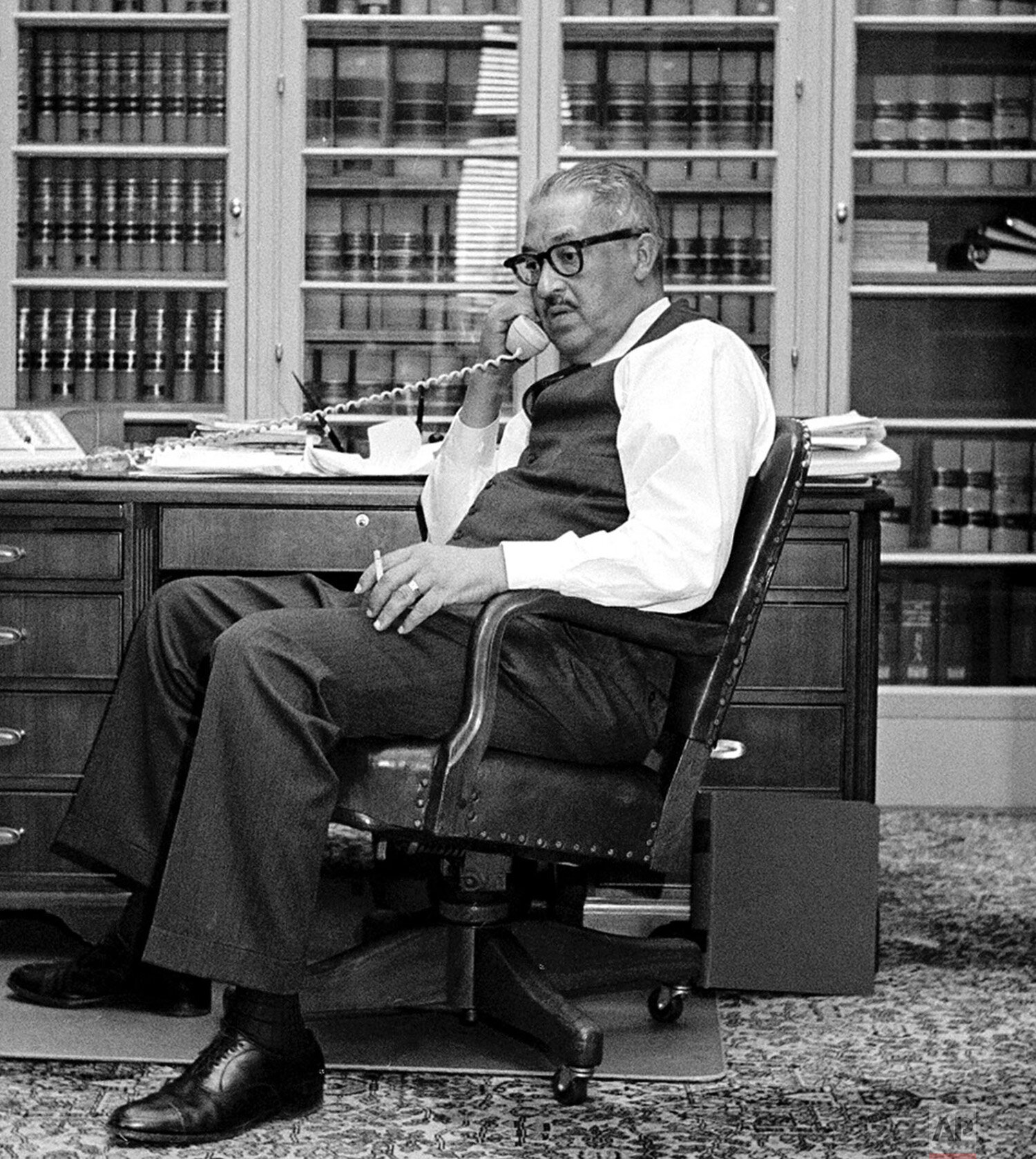
Thurgood Marshall, the new Solicitor General of the United States, talks on the phone in his Department of Justice office in Washington, Dec. 9, 1965. Marshall, grandson of a slave, gave up a lifetime tenure as a Court of Appeals judge to become the government's chief advocate before the Supreme Court. (AP Photo)
